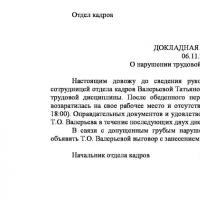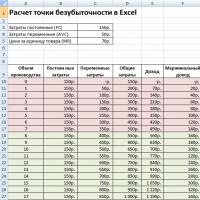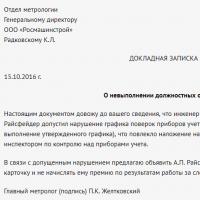How can I quickly and free of charge get an extract from the Unified State Register of Legal Entities?
The Unified State Register of Legal Entities (EGRLE) is a database created by the Tax Inspectorate, which contains all information related to enterprises in the status of a legal entity registered in our country.
This database contains data on reorganizations, closures of enterprises, on changes made to the statutory documents.
What information does the Unified State Register of Legal Entities contain?
The Unified State Register of Legal Entities has information about:
- full and abbreviated names of enterprises, their translations into foreign languages;
- legal addresses indicated on the day of registration, contact details;
- organizational forms (LLC, OJSC, CJSC, etc.) and methods of formation (reorganizations, creations);
- constituent documents and volumes of registered initial capital;
- the dates in which enterprises were registered and the dates in which changes were made to documents, reorganizations and liquidations took place;
- founders or shareholders (their number, full name (names of legal entities), size of shares and their value);
- volumes of assets (excluding borrowed funds) at the end of the previous reporting period;
- organized branches and representative offices, acquired licenses;
- types of entrepreneurial activity (OKVED codes, TIN, dates of registration and numbers in the FSS, Pension Fund and Compulsory Medical Insurance Fund, dates of information changes);
- positions and full names of persons who are entitled to act in the interests of the enterprise without a power of attorney;
- about bank accounts.
Almost all information in this registry is public, except for data on bank accounts, executives and business owners. These data are provided only to public authorities and non-budgetary funds in accordance with the procedure established in legislative acts. In the Unified State Register of Legal Entities, you can also order copies of documents of enterprises and certificates of the absence of any data. 
Varieties of extracts
An extract is an official document drawn up in accordance with the requirements of the law, which is required:
- to confirm the rights of the head, if the entrepreneur needs to open a bank account or to certify documents with a notary;
- when making various transactions with real estate;
- when participating in auctions and tenders, at auctions;
- when verifying the validity of business partner data.
Free statements are provided:
- law enforcement agencies, courts, local governments, extra-budgetary funds and persons who have the right to do so, as determined by legislative acts;
- legal entities about their own enterprise.
For a fee, information in a general form is provided to legal entities and individuals after paying a fee.
Depending on the cost and term of registration, an extract can be urgent or not urgent, regular or extended. For an urgent one, you need to pay 400 rubles, it is issued a day after submitting a request to the Tax Inspectorate. Not urgent costs 200 rubles, you need to wait five days for it. In practice, these deadlines are rarely observed - the document has to be expected longer.
 In the ordinary form statement, only publicly available information is indicated, and everyone can get it. The extended version of the extract provides information that is not available when receiving the regular version: about bank accounts and data on the heads and founders of enterprises. An extended version is ordered if a document is needed to be submitted to the court, an extra-budgetary fund, to register an organization and change the charter or memorandum of association.
In the ordinary form statement, only publicly available information is indicated, and everyone can get it. The extended version of the extract provides information that is not available when receiving the regular version: about bank accounts and data on the heads and founders of enterprises. An extended version is ordered if a document is needed to be submitted to the court, an extra-budgetary fund, to register an organization and change the charter or memorandum of association.
The extract may be paper(official printout certified by signature and seal and issued by the Tax Office) or electronic(obtained online via the Internet). An electronic version that is not printed on paper is informational, suitable only for verifying the accuracy of information and is not suitable for participating in a tender, providing it to a notary or court.
An electronic statement can be ordered from the Unified State Register of Legal Entities on the website nalog.ru, if there is a CryptoPro certificate. The application is filled in the "Create a new application" section, the number assigned during registration and the type of data required are indicated. On the same site, you can order not only an electronic version in Excel format, but also a paper document with a signature, which can be obtained if you visit the Tax Office or order mail delivery. You can also get an electronic document on the public services portal.
To obtain an extract, you can also use the services of one of the many Internet sites that have access to the Unified State Register of Legal Entities. The cost of such a service is from 200 rubles, the statement is sent by e-mail in a few hours.
On the video - the process of obtaining an extract via the Internet:
If you need a document certified by an inspector, then you can find such an Internet resource that will issue it for 500-600 rubles. The main advantages: the speed of obtaining a document and the absence of the need to go for it (usually it is delivered by an employee of an intermediary company).
More costly methods one-time and unlimited access to the Unified State Register of Legal Entities. To obtain unlimited access, you must send an application with a request to provide electronic statements. The fee for this service is quite high - about 150,000 rubles (for each employee) per year. One-time access to the registry (for one day) costs 50,000 rubles. These services are suitable for enterprises with a large number of contractors.
The process of issuing an extract
The issuance of an extract takes place in 4 stages:
- Drafting an application.
- Payment of duty.
- Submission to the Tax Inspectorate of the application together with a receipt certifying the payment of the fee.
- Receipt of the finished document.
There is no form defined by law for filling out an application for an extract from the Unified State Register of Legal Entities. The application can be submitted to any branch of the Tax Service. In the upper right corner, the department to which the application will be submitted, the name of the enterprise that requests information, the OGRN, TIN, and authorized person are indicated.
Further in the middle of the page is written "APPLICATION". On a new line, the name of the enterprise about which the data is requested, the number assigned during registration, the code and TIN assigned during tax registration are indicated. In the lower left corner, the date of filing the application is indicated, in the lower right corner, the official signs (with a transcript). If several copies of the document are required, the quantity is indicated in the application.
A document confirming the payment of the fee through the terminal at the Tax Inspectorate or a bank must be attached to the application.
If the application indicates that several copies are required for one enterprise, then payment is allowed to be made in one payment.
Based on subparagraph 14 of paragraph 1 of Article 264 of the Tax Code, when calculating the base for income tax, the funds spent on documents from the Unified State Register of Legal Entities can be attributed to the costs of information services. If too many funds are transferred, they are returned.
The application can be taken in person, sent by courier, by mail, through a representative. In the Tax Inspectorate, the document is processed and sent for verification with subsequent registration. If all stages are completed successfully, the Tax Office notifies the entrepreneur that the requested document can be received in person, by mail or through a representative. The tax office also informs the entrepreneur about the refusal to issue an extract (if the application did not pass the verification). 
Possible problems
Sometimes it happens that the information indicated in the extract is invalid, the company has problems participating in an auction or tender, when concluding an important contract, applying for a loan, opening a bank account. There are only three reasons for such errors:
- the application contains incorrect information about the enterprise;
- the registrar made a mistake while entering information;
- failure in the database of the Tax Inspectorate.
Most often, registrars make mistakes when they enter passport data and the amount of the authorized capital, skip zeros or add extra ones. If an error is discovered on the same day that the extract is received, then you should return to the same inspector to issue a correction card. In such a situation, a new statement is issued within a day.
If an error is found after a few days, then you have to go to the Tax Office several times, but this is less difficult than making amendments to the registry. In the case when the error is discovered after a week or more, it is much more difficult to fix it. A whole package of documents is required:
- a copy of the received extract, which contains the passport data of the director and founders;
- a copy of the latest version of the Articles of Association (Memorandum of Association);
- a copy of the minutes confirming the appointment of the director;
- TIN and registration certificate;
- photocopies of passports of the director and founders.
- Prepare and submit to the Tax Inspectorate an application on behalf of the head of the enterprise indicating the error along with the prepared package of documents. There is no specific form for such a declaration. A new document is provided within one to three months, as it requires not only the correction of an error in the statement, but also a change in the entry in the registry.
- Apply for a data change directly to the registry. For example, if the legal address is incorrectly indicated in the received extract, documents containing the correct version are submitted. The second method is more expensive, but the result can be obtained faster.
 Ready-made business plan with calculations using the example of a web studio
Ready-made business plan with calculations using the example of a web studio Registration of an internal memorandum: sample document and drafting rules
Registration of an internal memorandum: sample document and drafting rules Break even. Formula. Example of model calculation in Excel. Advantages and disadvantages
Break even. Formula. Example of model calculation in Excel. Advantages and disadvantages Advance report is ... Advance report: sample filling
Advance report is ... Advance report: sample filling How to stitch documents with threads by hand?
How to stitch documents with threads by hand? Disciplinary sanction for non-fulfillment of official duties
Disciplinary sanction for non-fulfillment of official duties Binding your book
Binding your book